Economy
One Solution to Canada’s Housing Crisis: Move. Toronto loses nearly half million people to more affordable locations

From the Frontier Centre for Public Policy
By Wendell Cox
The largest CMA, Toronto, had by far the most significant net internal migration loss at 402,600, Montreal lost 162,700, and Vancouver lost 49,700.
Canadians are fleeing overpriced cities to find more affordable housing. And restrictive urban planning policies are to blame.
Canadians may be solving the housing crisis on their own by moving away from more expensive areas to areas where housing is much more affordable. This trend is highlighted in the latest internal migration data from Statistics Canada.
The data covers 167 areas comprising the entire nation, including Census Metropolitan Areas (CMAs), which have populations from 100,000 to seven million. It also includes the smaller Census Agglomerations (CAs), which have a core population of at least 10,000, as well as areas outside CMAs and CAs in each province and territory, which are referred to as “largely rural areas.”
Long-standing migration trends have been virtually reversed. Larger cities (CMAs) now see the highest loss of net internal migrants, while smaller cities (CAs) are experiencing solid gains. Between 2019 and 2023, Canada’s CMAs lost 273,800 net internal migrants to smaller areas, including CAs and largely rural areas. This contrasts sharply with the previous five-year period (2014 to 2018) when CMAs saw only a 1,000-person loss.
So, where did these people go? A significant portion – 108,100 – moved to CAs, which captured 39 per cent of the CMA losses. This is triple that of the previous five years (2014 through 2018).
However, the most notable shift occurred in largely rural areas, which gained 165,700 net internal migrants, representing 61 per cent of CMA losses. This is a dramatic increase compared to the 33,700 net loss in the previous five years.
Among the 167 areas, the migration data is stunning.
The areas experiencing the greatest net internal migration are outside CMAs and CAs. The largely rural area of Ontario saw the biggest gain, with a net increase of 78,300 people – nearly 40 times the number from the previous five years. Meanwhile, rural Quebec placed second, with a net gain of 76,200 people, more than 10 times the increase in the prior five years. The Calgary CMA ranked third (and first among CMAs) at 42,600, followed by the Ottawa Gatineau CMA (Ontario and Quebec) at 36,700 and the Oshawa CMA at 34,900.
The largest CMA, Toronto, had by far the most significant net internal migration loss at 402,600, Montreal lost 162,700, and Vancouver lost 49,700. Outside these CMAs, nearly all areas posted net gains.
People have also started moving to the Maritimes. The Halifax CMA tripled its previous gain (21,300). In New Brunswick, Moncton nearly quadrupled its gain (7,000). Modest gains were also made in Fredericton and Saint John as well as in Charlottetown in Prince Edward Island.
Meanwhile, housing affordability in Canada’s largest CMAs has become grim. Toronto’s median house price to median household income has doubled in less than two decades. Vancouver’s prices have tripled relative to incomes in five decades. Montreal’s house prices nearly doubled relative to incomes over two decades.
These CMAs (and others) have housing policies typical of the international planning orthodoxy, which seeks to make cities denser. In effect, they have declared war against “urban sprawl,” trying to stop any material expansion of urbanization. These urban containment policies, which include greenbelts, agricultural reserves, urban growth boundaries and compact city strategies, are associated with the worst housing affordability. Land prices are skewed upward throughout the market. Demand continues to increase ahead of incomes, but the supply of low-cost suburban land, so crucial to controlling costs, is frozen.
Regrettably, some areas where people have fled are also subject to urban containment and housing affordability has deteriorated rapidly. Between 2015 and 2022, prices in Ontario CMAs London, Guelph, Brantford and St. Catharines have about doubled. BC’s Fraser Valley and Vancouver Island have seen similar increases. Those moving to these areas are ahead financially, but the rapidly rising house prices are closing opportunities.
There are proposals to restore housing affordability, though none tackle the urban containment policies associated with the price increases. Indeed, we have not found a single metropolitan area where housing affordability has been restored with the market distortions of the intensity that have developed in Toronto, Vancouver and Montreal (not in our Demographia International Housing Affordability report or elsewhere). Such markets have become unsustainable for most new entrant households because they cannot afford to live there.
Housing is not a commodity. Households have varying preferences, from ground-oriented housing (detached and townhomes) to high-rise condos. Indeed, a growing body of literature associates detached housing with higher total fertility rates. According to Statistics Canada, Canadians have favoured lower densities for decades, a trend that continued through the 2021 Census, a trend that continued through the 2021 Census, according to Statistics Canada.
With governments (virtually around the world) failing to maintain stable and affordable housing markets, it’s not surprising people are taking matters into their own hands. Until fundamental reforms can be implemented in the most expensive markets, those seeking a better quality of life will have no choice but to leave.
First published in the Financial Post.
Wendell Cox is a senior fellow at the Frontier Centre for Public Policy and the author of Demographia International Housing Affordability.
Business
Large-scale energy investments remain a pipe dream
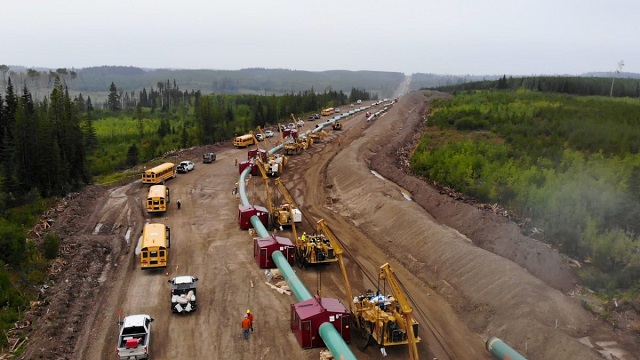
I view the recent announcements by the Government of Canada as window dressing, and not addressing the fundamental issue which is that projects are drowning in bureaucratic red tape and regulatory overburden. We don’t need them picking winners and losers, a fool’s errand in my opinion, but rather make it easier to do business within Canada and stop the hemorrhaging of Foreign Direct Investment from this country.
Thanks for reading William’s Substack!
Subscribe for free to receive new posts and support my work.
Changes are afoot—reportedly, carve-outs and tweaks to federal regulations that would help attract investment in a new oil pipeline from Alberta. But any private proponent to come out of this deal will presumably be handpicked to advance through the narrow Bill C-5 window, aided by one-off fixes and exemptions.
That approach can only move us so far. It doesn’t address the underlying problem.
Anyone in the investment world will tell you a patchwork of adjustments is nowhere near enough to unlock the large-scale energy investment this country needs. And from that investor’s perspective, the horizon stretches far beyond a single political cycle. Even if this government promises clarity today in the much-anticipated memorandum of understanding (MOU), who knows whether it will be around by the time any major proposal actually moves forward.
With all of the talk of “nation-building” projects, I have often been asked what my thoughts are about what we must see from the federal government.
The energy sector is the file the feds have to get right. It is by far the largest component of Canadian exports, with oil accounting for $147 billion in 2024 (20 percent of all exports), and energy as a whole accounting for $227 billion of exports (30 percent of all exports).
Furthermore, we are home to some of the largest resource reserves in the world, including oil (third-largest in proven reserves) and natural gas (ninth-largest). Canada needs to wholeheartedly embrace that. Natural resource exceptionalism is exactly what Canada is, and we should be proud of it.
One of the most important factors that drives investment is commodity prices. But that is set by market forces.
Beyond that, I have always said that the two most important things one considers before looking at a project are the rule of law and regulatory certainty.
The Liberal government has been obtuse when it comes to whether it will continue the West Coast tanker ban (Bill C-48) or lift it to make way for a pipeline. But nobody will propose a pipeline without the regulatory and legal certainty that they will not be seriously hindered should they propose to build one.
Meanwhile, the proposed emissions cap is something that sets an incredibly negative tone, a sentiment that is the most influential factor in ensuring funds flow. Finally, the Impact Assessment Act, often referred to as the “no more pipelines bill” (Bill C-69), has started to blur the lines between provincial and federal authority.
All three are supposedly on the table for tweaks or carve-outs. But that may not be enough.
It is interesting that Norway—a country that built its wealth on oil and natural gas—has adopted the mantra that as long as oil is a part of the global economy, it will be the last producer standing. It does so while marrying conventional energy with lower-carbon standards. We should be more like Norway.
Rather than constantly speaking down to the sector, the Canadian government should embrace the wealth that this represents and adopt a similar narrative.
The sector isn’t looking for handouts. Rather, it is looking for certainty, and a government proud of the work that they do and is willing to say so to Canada and the rest of the world. Foreign direct investment outflows have been a huge issue for Canada, and one of the bigger drags on our economy.
Almost all of the major project announcements Prime Minister Mark Carney has made to date have been about existing projects, often decades in the making, which are not really “additive” to the economy and are reflective of the regulatory overburden that industry faces en masse.
I have always said governments are about setting the rules of the game, while it is up to businesses to decide whether they wish to participate or to pick up the ball and look elsewhere.
Capital is mobile and will pursue the best risk-adjusted returns it can find. But the flow of capital from our country proves that Canada is viewed as just too risky for investors.
The government’s job is not to try to pick winners and losers. History has shown that governments are horrible at that. Rather, it should create a risk-appropriate environment with stable and capital-attractive rules in place, and then get out of the way and see where the chips fall.
Link to The Hub article: Large-scale energy investments remain a pipe dream
Formerly the head of institutional equity research at FirstEnergy Capital Corp and ATB Capital Markets. I have been involved in the energy sector in either the sell side or corporately for over 25 years
Thanks for reading William’s Substack!
Subscribe for free to receive new posts and support my work.
Business
Will the Port of Churchill ever cease to be a dream?
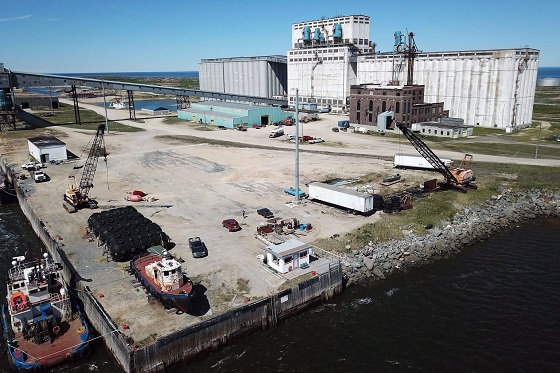
From Resource Works
The Port of Churchill has long been viewed as Canada’s northern gateway to global markets, but decades of under-investment have held it back.
A national dream that never materialised
For nearly a century, Churchill, Manitoba has loomed in the national imagination. In 1931, crowds on the rocky shore watched the first steamships pull into Canada’s new deepwater Arctic port, hailed as the “thriving seaport of the Prairies” that would bring western grain “1,000 miles nearer” to European markets. The dream was that this Hudson Bay town would become a great Canadian centre of trade and commerce.
The Hudson Bay Railway was blasted across muskeg and permafrost to reach what engineers called an “incomparably superior” harbour. But a short ice free season and high costs meant Churchill never grew beyond a niche outlet beside Canada’s larger ports, and the town’s population shrank.
False starts, failed investments
In 1997, Denver based OmniTrax bought the port and 900 kilometre rail line with federal backing and promises of heavy investment. Former employees and federal records later suggested those promises were not fully kept, even as Ottawa poured money into the route and subsidies were offered to keep grain moving north. After port fees jumped and the Canadian Wheat Board disappeared, grain volumes collapsed and the port shut, cutting rail service and leaving northern communities and miners scrambling.
A new Indigenous-led revival — with limits
The current revival looks different. The port and railway are now owned by Arctic Gateway Group, a partnership of First Nations and northern municipalities that stepped in after washouts closed the line and OmniTrax walked away. Manitoba and Ottawa have committed $262.5 million over five years to stabilize the railway and upgrade the terminal, with Manitoba’s share now at $87.5 million after a new $51 million provincial pledge.
Prime Minister Mark Carney has folded Churchill into his wider push on “nation building” infrastructure. His government’s new Major Projects Office is advancing energy, mining and transmission proposals that Ottawa says add up to more than $116 billion in investment. Against that backdrop, Churchill’s slice looks modest, a necessary repair rather than a defining project.
The paperwork drives home the point. The first waves of formally fast tracked projects include LNG expansion at Kitimat, new nuclear at Darlington and copper and nickel mines. Churchill sits instead on the office’s list of “transformative strategies”, a roster of big ideas still awaiting detailed plans and costings, with a formal Port of Churchill Plus strategy not expected until the spring of 2026 under federal–provincial timelines.
Churchill as priority — or afterthought?
Premier Wab Kinew rejects the notion that Churchill is an afterthought. Standing with Carney in Winnipeg, he called the northern expansion “a major priority” for Manitoba and cast the project as a way for the province “to be able to play a role in building up Canada’s economy for the next stage of us pushing back against” U.S. protectionism. He has also cautioned that “when we’re thinking about a major piece of infrastructure, realistically, a five to 10 year timeline is probably realistic.”
On paper, the Port of Churchill Plus concept is sweeping. The project description calls for an upgraded railway, an all weather road, new icebreaking capacity in Hudson Bay and a northern “energy corridor” that could one day move liquefied natural gas, crude oil, electricity or hydrogen. Ottawa’s joint statement with Manitoba calls Churchill “without question, a core component to the prosperity of the country.”
Concepts without commitments
The vision is sweeping, yet most of this remains conceptual. Analysts note that hard questions about routing, engineering, environmental impacts and commercial demand still have to be answered. Transportation experts say they struggle to see a purely commercial case that would make Churchill more attractive than larger ports, arguing its real value is as an insurance policy for sovereignty and supply chain resilience.
That insurance argument is compelling in an era of geopolitical risk and heightened concern about Arctic security. It is also a reminder of how limited Canada’s ambition at Churchill has been. For a hundred years, governments have been willing to dream big in northern Manitoba, then content to underbuild and underdeliver, as the port’s own history of near misses shows. A port that should be a symbol of confidence in the North has spent most of its life as a seasonal outlet.
A Canadian pattern — high ambition, slow execution
The pattern is familiar across the country. Despite abundant resources, capital and engineering talent, mines, pipelines, ports and power lines take years longer to approve and build here than in competing jurisdictions. A tangle of overlapping regulations, court challenges and political caution has turned review into a slow moving veto, leaving a politics of grand announcements followed by small, incremental steps.
Churchill is where those national habits are most exposed. The latest round of investment, led by Indigenous owners and backed by both levels of government, deserves support, as does Kinew’s insistence that Churchill is a priority. But until Canada matches its Arctic trading rhetoric with a willingness to build at scale and at speed, the port will remain a powerful dream that never quite becomes a real gateway to the world.
Headline photo credit to THE CANADIAN PRESS/John Woods
-

 Alberta8 hours ago
Alberta8 hours agoNational Crisis Approaching Due To The Carney Government’s Centrally Planned Green Economy
-
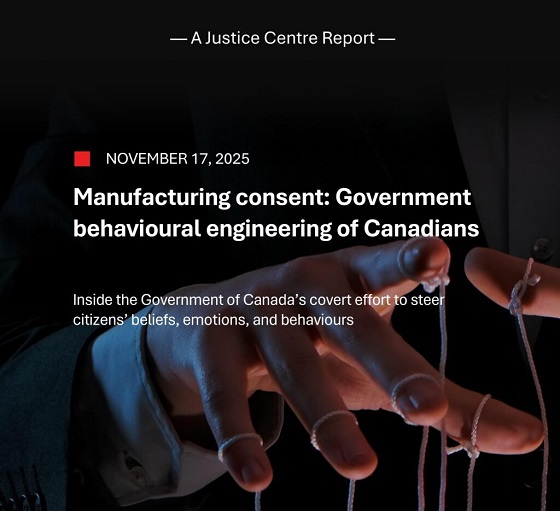
 COVID-1921 hours ago
COVID-1921 hours agoNew report warns Ottawa’s ‘nudge’ unit erodes democracy and public trust
-
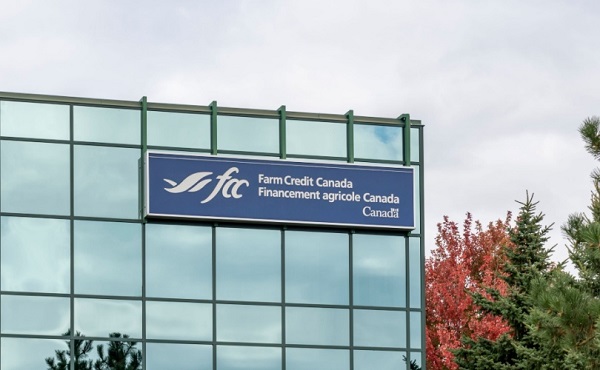
 Agriculture9 hours ago
Agriculture9 hours agoFederal cabinet calls for Canadian bank used primarily by white farmers to be more diverse
-

 Great Reset7 hours ago
Great Reset7 hours agoCanadian government forcing doctors to promote euthanasia to patients: report
-
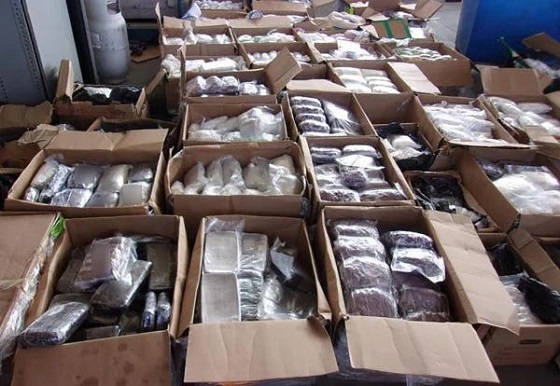
 Crime2 days ago
Crime2 days agoHow Global Organized Crime Took Root In Canada
-

 Energy2 days ago
Energy2 days agoExpanding Canadian energy production could help lower global emissions
-

 Business2 days ago
Business2 days agoThe numbers Canada uses to set policy don’t add up
-

 COVID-191 day ago
COVID-191 day agoFreedom Convoy protestor Evan Blackman convicted at retrial even after original trial judge deemed him a “peacemaker”






